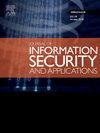了解从业者对使用隐私危害类别进行隐私风险评估的观点
IF 3.7
2区 计算机科学
Q2 COMPUTER SCIENCE, INFORMATION SYSTEMS
Journal of Information Security and Applications
Pub Date : 2025-08-05
DOI:10.1016/j.jisa.2025.104174
引用次数: 0
摘要
隐私影响评估(PIAs),也称为欧盟GDPR下的数据保护影响评估(DPIAs)和隐私风险评估(PRAs)已经成为突出的隐私工程方法,帮助开发人员和数据控制者系统地识别隐私风险并分配适当的控制。作为这些方法的一部分,隐私损害的概念已被提出作为一种有价值的、结构良好的分类法,有助于从业者做出的评估决策的合理化和正当性。虽然一些PRA方法包括隐私危害,但基于从业者的观点,这些内容的影响在很大程度上仍未被探索。因此,本研究通过探究PIA/DPIA和PRA从业者的观点,探讨评估预定义的隐私危害类别(即身体、心理、金融/经济、声誉和社会危害)是否可以改善PRA结果。使用半结构化访谈,包括一个可行的PRA练习,在反身性主题分析之后,引出和分析了对隐私危害的意见和观点。总共采访了17位隐私从业人员,在评估隐私损害类别方面,他们给出了一系列积极(例如,信息丰富、有教育意义)和消极(例如,误导、过于宽泛)的意见。进一步的结果表明,缺乏对隐私损害的标准化定义。此外,与会者指出,隐私损害高度依赖于环境,并因数据主体而异;因此,导致难以量化。然而,隐私损害是PIA/DPIA和PRA方法的重要补充,在评估风险、严重性和实施缓解控制时支持更合理和合理的决策。然而,为了有效地分配时间和资源进行评估,建议对危害类别进行一定的优先排序。本文章由计算机程序翻译,如有差异,请以英文原文为准。

Understanding practitioner perspectives on using privacy harm categories for privacy risk assessment
Privacy Impact Assessments (PIAs), also known as Data Protection Impact Assessments (DPIAs) under the EU GDPR, and Privacy Risk Assessments (PRAs) have emerged as prominent privacy engineering methodologies, aiding developers and data controllers to systematically identify privacy risk and assign appropriate controls. As part of such methodologies, the concept of privacy harms has been proposed as a valuable, well-structured taxonomy that contributes to the rationalization and justification of assessment decisions made by practitioners. While some PRA methodologies include privacy harms, the impact of these inclusions based on practitioners’ perspectives remains largely unexplored. Hence, this study investigates whether evaluating predefined privacy harm categories, i.e., physical, psychological, financial/economic, reputational, and societal harms, can improve PRA outcomes by exploring PIA/DPIA and PRA practitioners’ perspectives. Using semi-structured interviews, including a workable PRA exercise, opinions and perspectives on privacy harms were elicited and analyzed following a reflexive thematic analysis. In total, 17 privacy practitioners were interviewed, revealing a range of positive (e.g., informative, educational) and negative (e.g., misleading, too broad) opinions on evaluating privacy harm categories. Further results indicate a lack of a standardized definition of privacy harm. In addition, participants noted that privacy harms are highly context-dependent and vary based on the data subject; hence, resulting in difficulty quantifying. Nevertheless, privacy harms are a critical addition to PIA/DPIA and PRA methodologies, supporting more rationalized and justifiable decisions when assessing risk, severity, and implementing mitigating controls. Yet, some prioritization of harm categories is advisable to efficiently allocate time and resources for assessment.
求助全文
通过发布文献求助,成功后即可免费获取论文全文。
去求助
来源期刊

Journal of Information Security and Applications
Computer Science-Computer Networks and Communications
CiteScore
10.90
自引率
5.40%
发文量
206
审稿时长
56 days
期刊介绍:
Journal of Information Security and Applications (JISA) focuses on the original research and practice-driven applications with relevance to information security and applications. JISA provides a common linkage between a vibrant scientific and research community and industry professionals by offering a clear view on modern problems and challenges in information security, as well as identifying promising scientific and "best-practice" solutions. JISA issues offer a balance between original research work and innovative industrial approaches by internationally renowned information security experts and researchers.
 求助内容:
求助内容: 应助结果提醒方式:
应助结果提醒方式:


